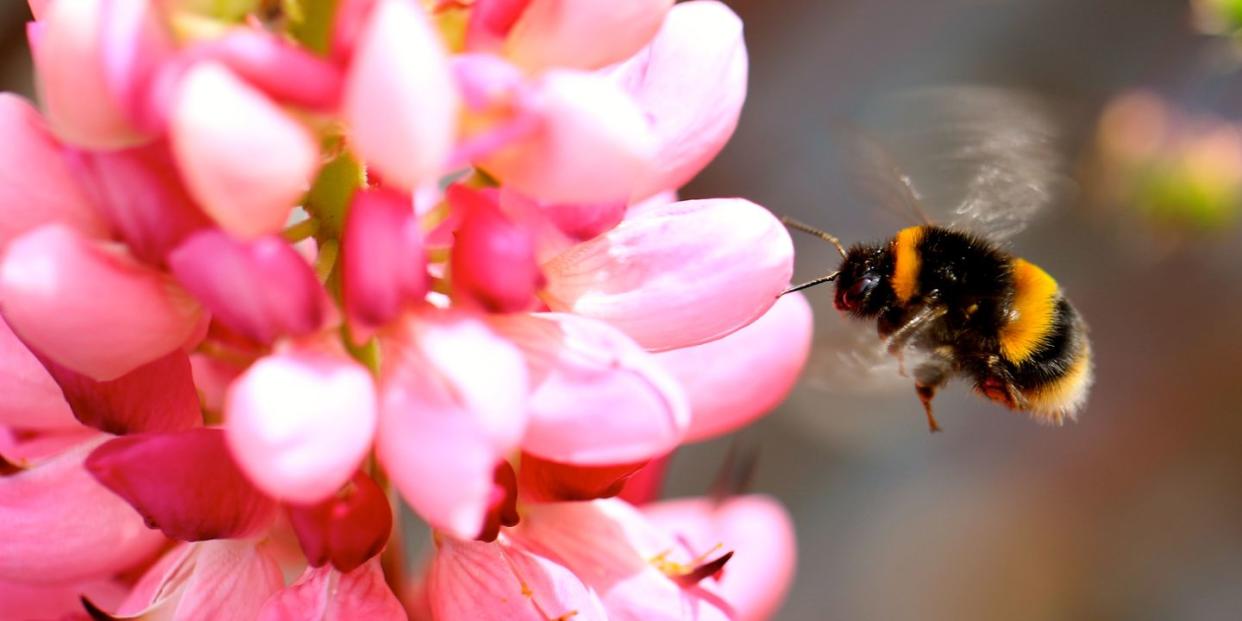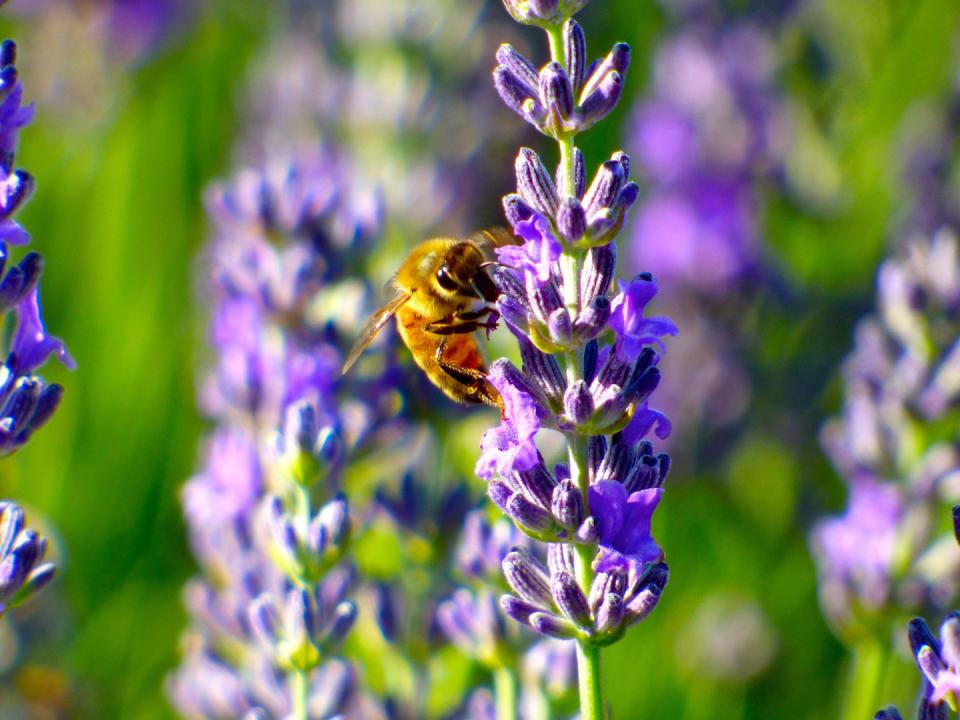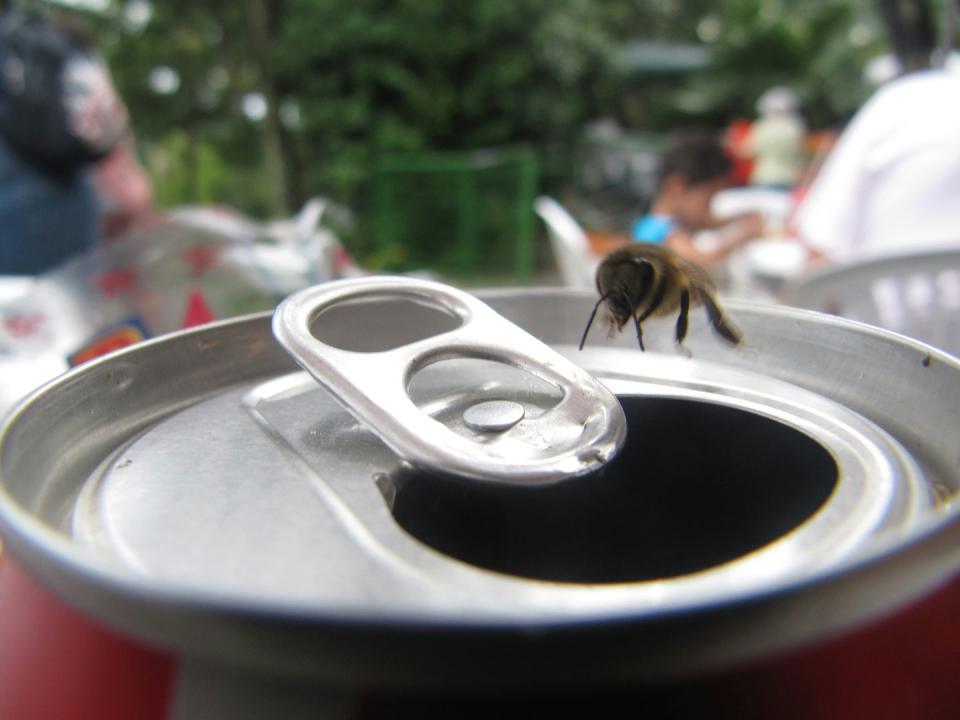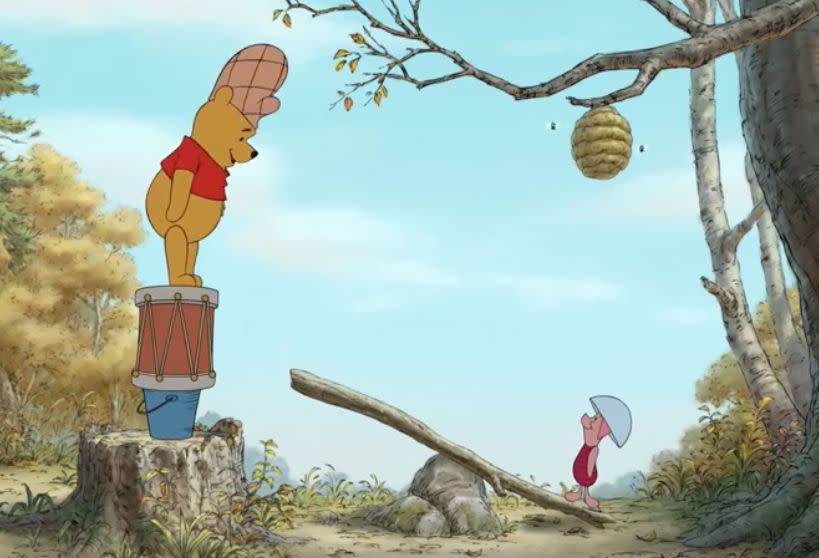How to Keep Wasps and Bees Out of Your Yard

We all love flowers. The more colorful blossoms the better—in gardens, in hanging baskets, in pots, every which way. And flowers, naturally, attract bees. We all love bees, too, at least in theory. Our food supply literally depends on those industrious little pollinators; we know we need to keep their ecosystem healthy and make sure they thrive and don't die out. (They also, of course, make for delightful cartoon characters, Halloween costumes, and sports-team mascots.) In short: Hooray for bees!
BUT... bees sting! And crawl on your food when you're trying to enjoy a backyard barbecue! And send little children into a tizzy! It's a serious summertime conundrum: Can I save the bees while still keeping them the heck away from me? How do I get them to just...buzz off?

Good news: It is possible! To achieve bee balance, Guillermo Fernandez, executive director of The Honeybee Conservancy, recommends creating a bee garden. These gardens, planted with flowers that bees love, actually give you the best of both worlds: They help bees AND keep them away from you, all at once. Magic! Here's the trick: Plant a patch of bee-beloved flowers like lavender, crocus, hyacinth, and snapdragons at the far edge of your yard, as far away as possible from your patio, deck, pool, or wherever you want to enjoy your outdoor living bee-free. Your flying friends will happily stay where the nectar is and leave your hamburgers and hot dogs alone. Ta-da!
Fernandez also suggests accessorizing your garden with a "bee bath": "Everyone's heard of a bird bath, but bees need water just like the rest of us. Sometimes, that's what they're looking for," he says. Fill a shallow container with fresh water, change it frequently so it doesn't get stagnant, and include a few rocks or twigs for the bees to land on while they drink. And here's a crucial tip I definitely didn't know: Bees prefer to be in the sunlight, Fernandez says. So if you stay in the shade, even if it's just underneath a patio umbrella, they will be less likely to buzz your way.
Even without its own personal garden, a bee usually won't disturb your dinner, says Fernandez. Bumblebees are the type you're most likely to come across in a typical suburban backyard, he says, and he actually refers to the common bumblebee as the "teddy bee" because it's big, fuzzy, and gentle, like a teddy bear. Bumblebees won't sting unless they feel they are under attack, he says.
"Ask yourself, 'Is it fuzzy?' If it is, just ignore it," he recommends. "It's foraging for nectar, not your food. If a bee is hovering around you, it's probably just determining whether it thinks you're a flower!"
Before you go running to bring all the bees to your yard, though, there's one important thing to note: Bees are not the same thing as wasps, and wasps are a whole different story. "Bees are usually not aggressive and rarely sting," says Jim Fredericks, chief entomologist and VP of technical and regulatory affairs for the National Pest Management Association. "But wasps and hornets, which are often lumped into the same group as bees, can be aggressive and are a real threat in the late summer and early fall."

These decidedly unfriendly pests are often attracted to human food, especially sweets and sugary drinks, Fredericks says—so much so that he recommends serving outdoor drinks in clear cups, so you can be sure there's no unwanted visitors hiding inside. "Aluminum cans and plastic bottles are good hiding spots for stinging insects," he says. (Yes, a wasp will crawl right into your soda can! Yikes. Think before you drink.) It's also smart to keep all outdoor food—and garbage—in sealed containers, he says.
In addition to food smells, Fredericks adds, "yellowjackets and other stinging wasps and hornets are also attracted to fragrances from shampoo, perfumes, and candles." So avoid using scented items before your next picnic—if that hand lotion smells yummy to you, it probably will to a wasp, too.

Lastly, if you come across a nest or a hive in your yard, don't be a hero—they are most definitely not as charming in real life as they are in all those Winnie the Pooh stories! In fact, they can be quite serious, so do not disturb a beehive, and definitely do not attempt to remove it yourself. "Stinging insects send over 500,000 Americans to the emergency room every year and are not a do-it-yourself pest," Fredericks says. "Instead, contact a licensed pest-control professional to conduct an inspection and determine the best avenue for removal."
Follow House Beautiful on Instagram.
You Might Also Like

